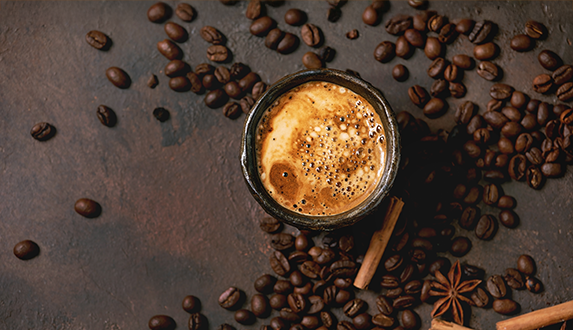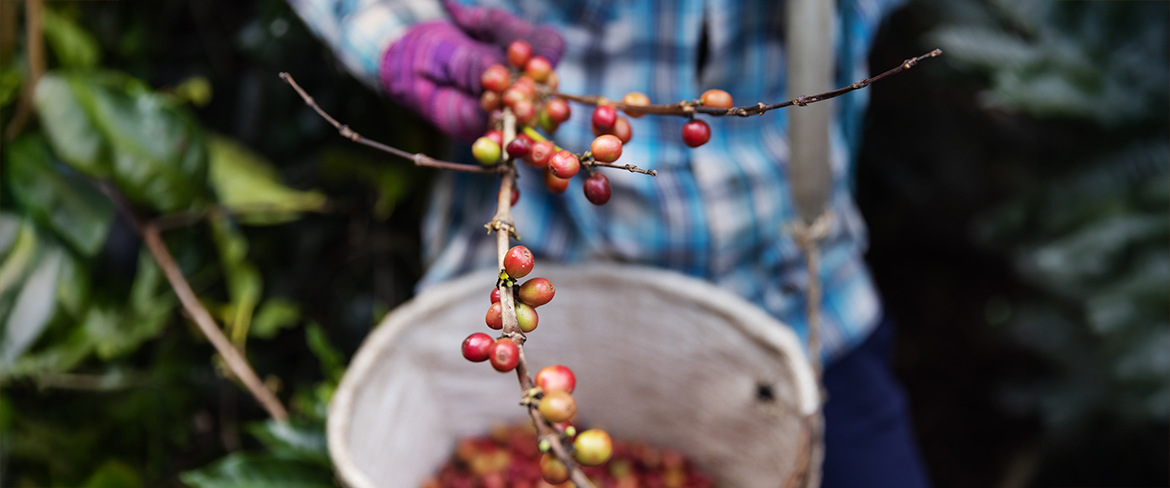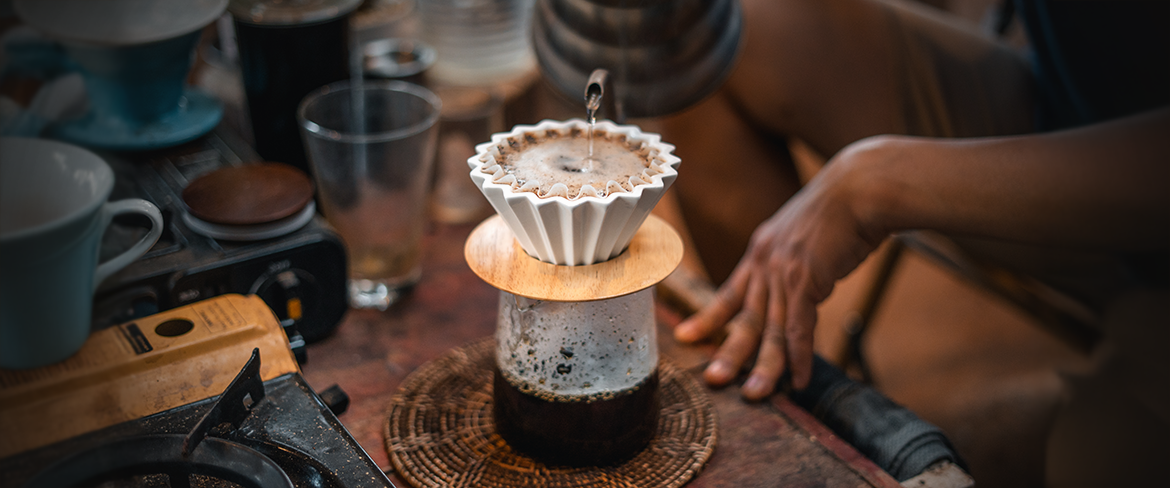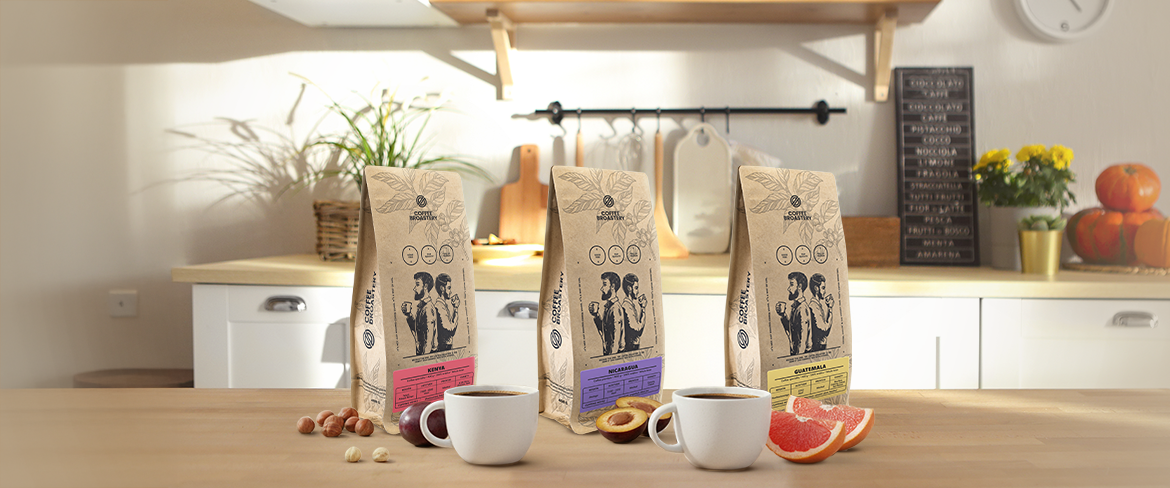Speciality coffee. Where did the passion for quality come from?

There was a time when coffee simply needed to exist. Today, we want it to be extraordinary – full of flavour, aroma, and story. The passion for quality doesn’t appear out of nowhere – it’s the result of a conscious approach to what we drink every day. This is exactly how the speciality coffee movement began, revolutionising the world of coffee.
But what exactly is speciality coffee, and why has it become synonymous with perfection in a cup? In this article, we’ll look at its definition, quality standards, and the journey from plantation, through speciality coffee roasters, all the way to your espresso machine. Brew your favourite coffee and immerse yourself in the aromatic story of quality. ☕
Summary:
- What is speciality coffee?
- The origins of the speciality coffee movement
- What makes speciality coffee unique?
- How to choose the best speciality coffee?
- Why drink speciality coffee?
What is speciality coffee?
Speciality coffee is a term that, in the coffee world, means much more than simply high quality coffee beans. It’s a whole philosophy based on transparency, freshness, and precision at every stage – from cultivation and harvesting to processing, roasting, brewing and the conscious choice of the consumer. Top quality coffee is no coincidence – it’s created through passion, knowledge, and attention to detail.
The simplest way to explain what is speciality coffee is this: it’s coffee created with the goal of delivering an extraordinary taste experience. Its production requires cooperation between farmers, roasters, and baristas – true artisans. Thanks to them, your cup can reveal notes of fruit, chocolate, almonds, honey, or flowers. So if you’re wondering, speciality coffee – what is it really? – it’s coffee that tells the story of its origin.
How is speciality coffee different from regular coffee?
The simplest answer is: in every way – from cultivation to taste. In the case of speciality coffee beans, quality control starts right at the plantation. The beans come from precisely defined regions – such as Brazil, Colombia or India – where the climate and altitude impart their unique character.
Unlike commercial blends, speciality coffee beans are hand-picked – only when they are perfectly ripe. They’re then meticulously selected so only the best ones make it to the next stage. There’s no room for chance in this process. High quality coffee is the result of precision and passion – which is why even a cup of speciality coffee brewed in an espresso machine at home can taste better than one from many cafés.
The most important stages of producing speciality coffee:
- ✔️ Cultivation – exclusively selected varieties, often from small farms.
- ✔️ Harvesting – by hand, without haste, ensuring perfect ripeness.
- ✔️ Roasting – an artisanal process carried out in small batches, ensuring a refined flavour profile.
- ✔️ Brewing – freshly ground beans and a precisely chosen extraction method.
💡 Worth knowing: In industrial coffee production, a notable percentage of defective beans is acceptable. With speciality coffee, this percentage is nearly zero – that’s why its taste is so clean and balanced.
Quality standards – Specialty Coffee Association (SCA)
The clear definition of what constitutes speciality grade coffee is set by the Specialty Coffee Association – an international organisation responsible for establishing the global standards of evaluation. Thanks to it, speciality coffee roasters worldwide can compare their products using the same criteria.
SCA experts evaluate coffee based on attributes such as aroma, flavour, acidity, balance, and aftertaste – all to identify beans that offer the highest sensory experience. To be classified as speciality coffee, beans must score at least 80 points on the SCA’s 100-point scale. Below that sits the premium or standard category, but that “eighty” mark sets the threshold separating outstanding coffees from the ordinary. Thanks to the Specialty Coffee Association, consumers can rest assured that by buying speciality coffee, they’re choosing top quality coffee – evaluated by international standards and prepared for optimal taste.
SCA scoring allows consumers to make more informed choices – they know that by purchasing the best speciality coffee from Brazil, India, or Guatemala, they’re investing in a unique flavour experience and quality that stands far above mass production.
In the next part, we’ll explore how the speciality coffee movement began and why people around the world fell in love with quality. You’ll also learn about the importance of the first roasteries and how the so‑called third wave coffee – the third wave in coffee culture – started. Keep reading!

The origins of the speciality coffee movement
The culture of speciality coffee didn’t appear overnight. Its history dates back to the 1970s in the United States, when a group of passionate coffee lovers decided to step away from mass production and restore coffee’s true taste and meaning. At that time, coffee consumption was mainly habitual – a drink meant simply to “wake you up.” Over time, however, some began to see that each bean holds much more: the story of its region, soil, climate, and the human hands that nurture it. This shift in perspective gave rise to what we now know as the speciality coffee movement.
Its pioneer was Erna Knutsen – it was she who, in 1974, first used the term specialty coffee in the pages of the *Tea & Coffee Trade Journal*. She described it as small‑batch coffee from unique micro‑regions, distinguished by exceptional flavour and aroma. The term quickly caught on within the industry and, over time, evolved into a global movement centred on quality, transparency, and the connection between producers and consumers.
The first roasteries and the birth of a new coffee culture
During the 1980s and 1990s, the first speciality coffee roasters began appearing across the United States and Europe. These were small independent businesses that opposed faceless industrial giants by focusing on freshness and quality control. This era also gave rise to some of the pioneers of the so‑called *second wave* of coffee culture – including Peet’s Coffee & Tea and the early era of Starbucks, long before it became a global chain.
The second wave popularised the idea of better coffee, yet the true revolution came with the emergence of the third wave of speciality coffee. That’s when coffee began to be viewed not merely as a commodity, but as a craft and sensory experience. Interest in cultivation methods, bean varieties, roasting processes, and brewing techniques became just as important as the final flavour in the cup.
The third wave – a revolution in a cup
The term third wave coffee refers to the movement that began around the turn of the 21st century. At this stage, coffee started to be appreciated more like fine wine – focusing on origin, terroir, processing method, and the individuality of each bean. Baristas became more than just coffee makers: they turned into ambassadors of taste and craftsmanship, revealing the personality hidden in every batch of speciality coffee beans.
Alongside growing consumer awareness came new organisations and events promoting coffee culture – such as the Specialty Coffee Association, barista championships, and roasting competitions worldwide. Thanks to them, coffee earned recognition as a product of cultural and sensory value. Today, roasteries in the USA, Europe, and Asia operate under the “from farm to cup” philosophy – maintaining full control over each stage of production and delivering coffee with a unique flavour profile and story.
📌 Summary: The beginnings of the speciality coffee movement tell a story of passion and pursuit of authentic taste. From the first small roasteries in the US, through the rise of the third wave, to today’s artisan speciality coffee roasters – one thing remains unchanged: the love for quality and respect for the bean. These values allow us to enjoy high quality coffee from Brazil, Colombia, Nicaragua, India, or Kenya – now available at CoffeeBroastery.com.

What makes speciality coffee unique?
Speciality coffee is much more than just another trend in the coffee world. It’s a philosophy of quality and authenticity that covers every step of the bean’s journey – from plantation to roasting, and finally to the moment the coffee reaches your cup. What really distinguishes it is transparency of origin, freshness, and ethical production. Every bag of beans holds not only rich aroma but also the story of a region, its people, and their passion for creating high quality coffee.
Unlike industrial blends, speciality coffee beans come from specific, often small, farms. They’re cultivated in a sustainable way, respecting nature and local communities, which guarantees not only superior flavour but also an ethical supply chain. That’s why you can discover a variety of flavour profiles – from fruity coffees of Kenya, through chocolate‑nutty Brazil, to the delicate sweetness of beans from Colombia. Speciality coffee is top quality coffee with soul and character.
High quality coffee in practice
The term high quality coffee is used often, but in the world of speciality coffee it has a precise meaning. In practice, it refers to coffee that meets demanding quality and sensory standards, while impressing with its freshness and complex taste profile. Each coffee bean undergoes careful selection, multiple tests, and evaluation before reaching an artisan speciality coffee roaster, where experienced roasters bring out its finest qualities.
Freshness is the essence of quality. That’s why speciality coffee beans are roasted in small batches and reach the customer quickly. This ensures that flavour and aroma are preserved at their peak. With each sip, you can explore subtle flavour notes and learn to recognise how altitude, region, and processing methods influence the taste experience.
☕ Core values that define speciality coffee:
- ✔️ Freshness – beans roasted in small batches, often right before dispatch.
- ✔️ Unique flavour – each growing region offers characteristic taste profiles.
- ✔️ Craftsmanship – roasting and brewing guided by knowledge, precision, and skill.
- ✔️ Awareness – consumers know exactly where their coffee comes from and who cultivates it.
From plantation to cup
The journey that speciality coffee takes before reaching your cup is one of precision, collaboration, and passion. It starts in regions where the combination of soil, climate, and altitude creates perfect conditions for coffee cultivation. Farmers hand‑pick only the ripest cherries, which are then processed using methods such as wash, natural, or honey – each deeply influencing the cup’s final flavour.
After selection and drying, the beans are packed and transported to a speciality coffee roaster, where the transformation truly begins. Skilled roasters, armed with expertise and modern equipment, tailor the roasting profile to enhance the bean’s natural character. The coffee is roasted in small batches, often evaluated during cupping, before being approved for sale.
The final stage is brewing – whether in a café or at home. No matter the method – espresso machine, moka pot, drip, aeropress, or chemex – the magic lies in the precision of grind size, water temperature, and extraction time. This is the moment when all previous stages – from Colombian plantations to roasting craftsmanship – meet in your cup of aromatic high quality coffee.
🌍 The journey of speciality coffee – from seed to cup:
- 🌱 Plantation – careful selection of varietals and manual harvesting.
- 🌤️ Processing – natural, honey, or washed methods that shape taste and texture.
- 🔥 Roasting – small‑batch craft roasting that reveals the coffee’s essence.
- ☕ Brewing – the art of extraction, unlocking aroma and balance in every sip.
📌 Summary: Speciality coffee is a perfect harmony between nature, people, and craftsmanship. Every stage – from seedling to cup – matters. This is why its flavour is unmatched and exceptional. If you wish to experience how different origins influence flavour, explore the best speciality coffee from Brazil, Nicaragua, Kenya, or India – and discover what true quality tastes like!
In the next section, we’ll show you how to choose the best speciality coffee and what to consider when matching its roast and profile to your brewing preferences – whether for espresso machines or alternative brewing methods.

How to choose the best speciality coffee?
When choosing the best speciality coffee, it’s worth following a few simple but essential rules. First, pay attention to the origin of the beans – the region, altitude, and varietal have a huge impact on flavour. Brazilian speciality coffee is usually mild and chocolatey, Colombian coffee is balanced and sweet, while beans from Kenya or Ethiopia offer bright, fruity acidity. Each origin represents its own distinctive character, so it’s worth exploring different countries and regions to discover your personal favourite profile.
Another key factor is the degree of roasting. A light roast enhances natural acidity and complexity, making it perfect for brewing methods like drip, chemex, or aeropress. A medium roast provides a balanced flavour with gentle sweetness, while darker roasts deliver fuller body and chocolate notes – ideal for espresso machines or moka pots. Match the roast profile to your preferred brewing method to fully enjoy the taste of the speciality coffee beans.
Equally important is freshness. Speciality coffee tastes best within a few weeks of roasting – look for the roast date on the bag. Avoid large stockpiles, as the aroma and complexity diminish over time. With high quality coffee, nothing extra is needed; pure, freshly roasted beans and good water are enough to make your cup outstanding.
Finally, remember there is no single “best” coffee for everyone. It depends entirely on your taste preferences. Some enthusiasts adore sweet, delicate Colombian coffees, others crave bold Guatemalan or vibrant citrus notes from Kenya. Experiment, taste, and follow your senses – the magic of speciality coffee lies in continuous discovery.
Why drink speciality coffee?
Drinking speciality coffee is more than a daily ritual – it’s a conscious choice of quality, lifestyle, and appreciation of flavour. Each cup reveals complex aromas, depth, and the hard work of people devoted to creating top quality coffee. Unlike mass‑produced blends, speciality coffee invites you to explore a world of variety: one day tropical fruit brightness, the next day sweet chocolate and nutty notes from Brazil or Colombia.
It’s also a symbol of responsible consumption. By choosing speciality coffee beans, you support farmers who care for their environment and the quality of their harvests. Through fair partnerships and transparent trade, speciality coffee represents ethics, respect, and craftsmanship – from the plantation to the cup. It’s not just about exceptional flavour; it’s a decision that makes a meaningful difference.
Coffee lovers often say that speciality coffee isn’t merely a beverage – it’s a way of life. It’s about mindfulness, slowing down, and celebrating the little moments of pleasure. Every sip becomes a journey through the world of aroma, connecting nature, skill, and tradition. And once you’ve experienced the taste of true speciality coffee beans, it's nearly impossible to go back to ordinary coffee again.
Brew a cup of outstanding speciality coffee and savour a moment of pure enjoyment – because quality always matters!
FAQ – Questions about speciality coffee
1. What is speciality coffee?
Speciality coffee refers to beans sourced from specific regions that meet the highest quality standards established by the Specialty Coffee Association (SCA). To earn this classification, coffee must achieve a minimum of 80 points on the SCA’s 100‑point scale during professional cupping sessions. This ensures a clean taste, complex aroma, and an absence of defects.
2. How is speciality coffee different from regular coffee?
Speciality coffee differs primarily in the quality of its beans and how they are processed. Hand‑picked, carefully selected, and roasted in small batches, these beans retain their natural aromas and complex notes. Every cup offers a unique sensory experience compared to industrial blends, which often taste flat or bitter.
3. Is speciality coffee suitable for espresso machines?
Absolutely! Speciality coffee is an excellent choice for espresso machines, especially if you enjoy rich aroma and deep flavour. For espresso, medium to dark roasts are recommended, producing fuller body and lower acidity. Lighter roasts work best for alternative brewing methods such as drip, aeropress, or chemex – perfect for highlighting fruity and floral notes.
4. Where does the best speciality coffee come from?
The best speciality coffee comes from the “coffee belt” – the strip of land between the Tropics of Cancer and Capricorn. Notable regions include Brazil, Colombia, Guatemala, Kenya, Nicaragua, and India. Each origin brings distinct characteristics – from chocolate and nutty tones to bright, fruity, and citrus notes.
5. How long does speciality coffee stay fresh?
Freshly roasted speciality coffee beans are best consumed within 4–6 weeks after roasting. Beyond this period, aroma and flavour start to fade. Buy smaller amounts, store in an airtight container away from heat and sunlight, and enjoy maximum freshness with every brew.
6. Why buy speciality coffee from Coffee Broastery?
Because we focus on quality, freshness, and variety. Our selection includes only carefully sourced speciality coffees from the world’s finest regions – from Brazil to Kenya. Each coffee is roasted in small batches to preserve its unique terroir and aroma. Every cup of our speciality coffee guarantees excellence and authentic flavour.
Recommended

